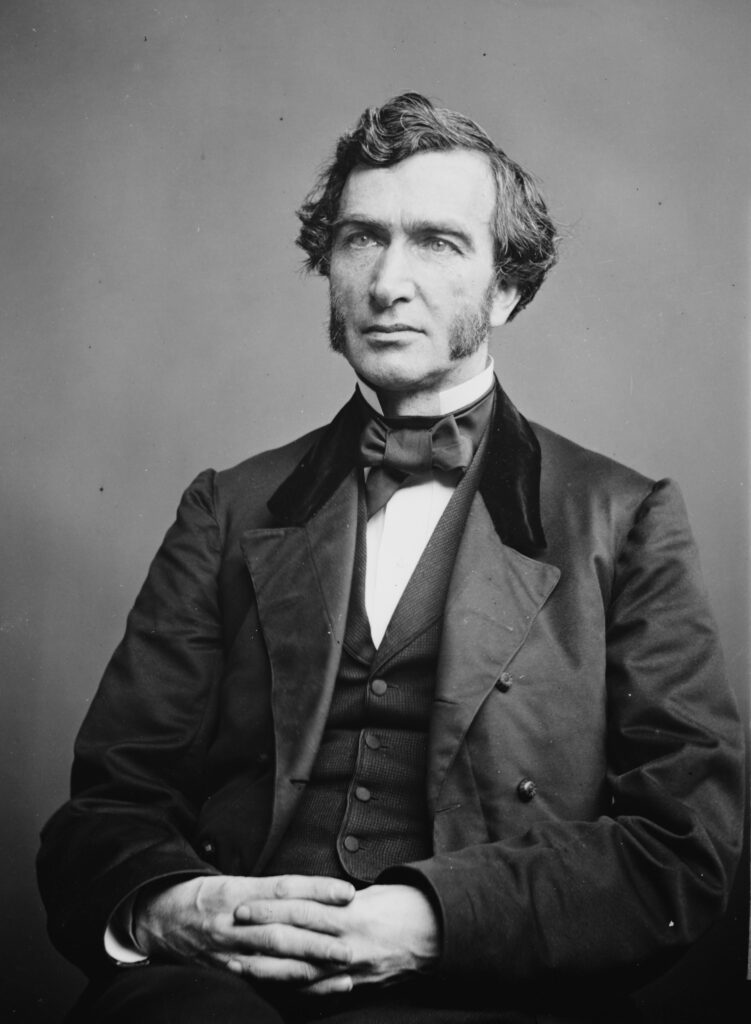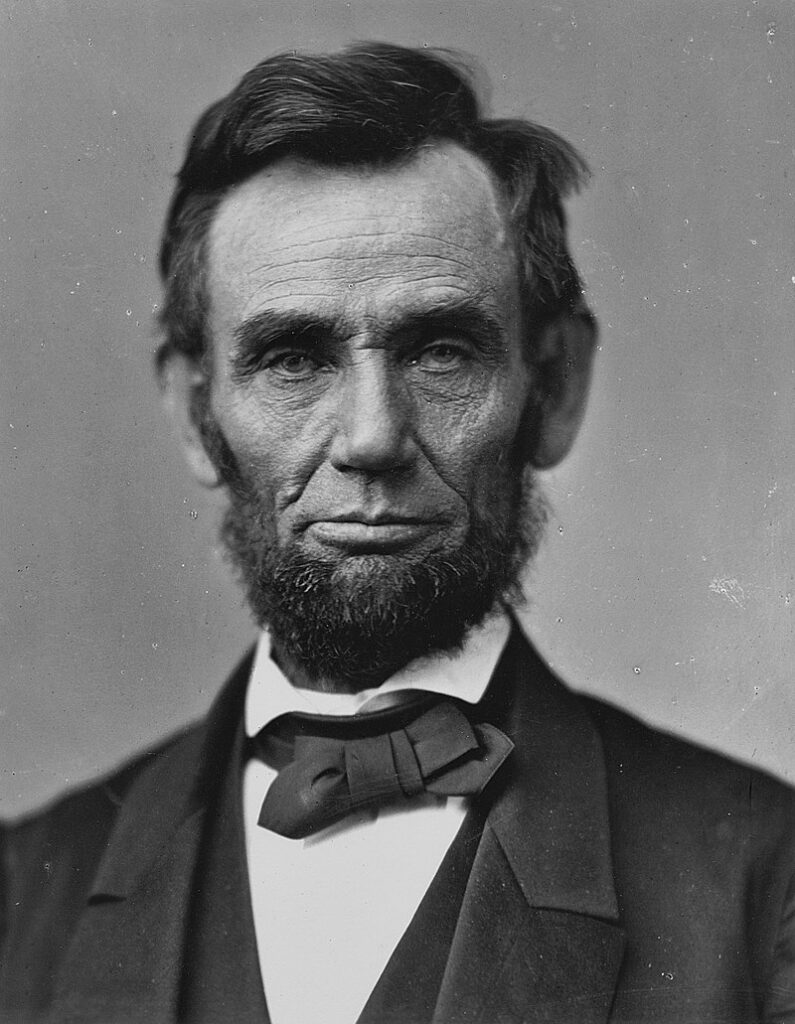The Morrill Land-Grant College Act of 1862 created an entirely new class of colleges that were centered on scientific, technical, and applied subjects, especially agriculture and engineering, and designed to educate the “industrial classes” — the sons and daughters of farmers and laborers. By accepting the Land Grant Act, the Pennsylvania Legislature designated the Agricultural College of Pennsylvania, today’s Penn State, as the recipient of the act’s endowment income. This bound the “Faith of the State” to perpetual support of Penn State as a public institution of higher education.
The Morrill Act was a political solution to pressure exerted by America’s rapidly strengthening agricultural lobby to provide collegiate-grade institutions, featuring scientific agriculture, for the farming class, as well as education in the mechanic arts, or engineering. The bill was introduced by U.S. Rep. Justin S. Morrill of Vermont, but was vetoed in 1859 by President James Buchanan, who deemed it “unconstitutional.”

Morrill refined the bill, which Congress passed overwhelmingly and President Abraham Lincoln signed into law on July 2, 1862. That same year, at the height of the Civil War, the federal government also disposed of hundreds of millions of acres through the Homestead Act as well as land grants for transcontinental railroads.
The idea behind the Morrill Land-Grant Act was simple. The states remaining in the Union were entitled to an allocation of federal land based on the size of their Congressional delegations. Pennsylvania, the second most populous state, was entitled to 30,000 acres for each of its two senators and twenty-four representatives, a total of 780,000 acres, most of it located in far-away western states and territories.
The land was to be sold and the proceeds used to establish an inviolable endowment generating income to support, in the words of the Act, “at least one college where the leading object shall be, without excluding scientific and classical studies, and including military tactics, to teach such branches of learning as are related to agriculture and the mechanic arts [engineering], in such manner as the legislatures of the States may respectively prescribe, in order to promote the liberal and practical education of the industrial classes in the several pursuits and professions of life.”
The Morrill Act required the states to pass legislation accepting the terms of the act, by the deadline of July 23, 1866. After intense lobbying by school President Evan Pugh, Centre County Congressman James Tracy Hale, and the state’s agricultural organizations, the Pennsylvania legislature accepted the act and Gov. Andrew Curtin signed it on April 1, 1863. The act designated the Agricultural College of Pennsylvania (renamed from the Farmers’ High School in 1862) as the sole beneficiary “until otherwise ordered by the Legislature of Pennsylvania.”
That proviso, however, set the stage for an intense legislative battle proposing to allocate the land-grant fund to other institutions and purposes. The battle began in 1864 and lasted until 1867, when the fund was finally devoted entirely to the Agricultural College.
Equally challenging was the actual disposal of the 780,000 acres available to Pennsylvania. Each state was entitled to first claim public land within in its own borders. States in which there was no remaining public land, particularly in the Northeast, including Pennsylvania, were to receive “scrip” or certificates to sell representing allotments of land in western states and territories. In the Pennsylvania act accepting the Land Grant, a board of commissioners was established to oversee the sale, which had a five-year deadline. However, no funds were allocated for advertising or managing the sale process, which was to be handed off to private land speculators.

The sale of land scrip went very slowly. In the first two years, less than three percent of the total acreage was initially sold between the federal standard of $1.25 per acre and the 80 cents per acre standard set by the Pennsylvania legislature. In 1866, the Legislature authorized funds to pay expenses connected with advertising and selling the land (which the federal act prohibited).
A year later, in February 1867, the Legislature passed H.B. 215, dedicating all proceeds from the sale of land scrip to the Agricultural College and repealing an earlier act that had limited sales to only one-third of the 780,000 acres. With that, the logjam of land-scrip sales broke apart, and the large lots of remaining acreage were sold by the fall of 1867.
The proceeds were less than anticipated, however. The total realized was nearly $439,186.80 or 56 cents per acre on average — far below the federal benchmark of $1.25. In 1872, the state’s surveyor-general pushed a recommendation, “as an act of tardy justice,” to increase the land-grant endowment to an even $500,000. The legislature concurred on April 3, 1872, issuing a new bond in that amount payable at the rate of six percent annually and generating $30,000 per year in operating income.
For Penn State, the Morrill Act’s impact was immediate and profound: It represented both a critical source of income and recognition as the commonwealth’s primary public institution of higher education.
But the act’s influence extended far beyond the land-grant colleges proper. It influenced the whole of American higher education. It institutionalized practical fields of study, particularly agriculture and engineering but other fields as well, and it did so not by eliminating liberal studies but by blending with them. It opened the institutions to new, previously under-served classes of students. It represented the federal government’s first policy involvement with and financial support for colleges and universities, and it encouraged the states to support these institutions financially as well. In short, it set the stage for the development of American higher education, both public and private into the twentieth century.
Roger Williams
Sources:
Geiger, Roger L., The History of American Higher Education: Learning and Culture from the Founding to World War II. Princeton: Princeton University Press, 2015.
Kerr, Clark, The Uses of the University: Cambridge: Harvard University Press, 1982.
Martin, Asa E., “Pennsylvania’s Land Grant Under the Morrill Act of 1862,” Pennsylvania History. Vol. 9, No. 2 (April 1942), pp. 85-117.
Williams, Roger L., Frederick Watts, and the Founding of Penn State. University Park: Penn State University Press, 2021.
Williams, Roger L., Evan Pugh’s Penn State: America’s Model Agricultural College. University Park: Penn State University Press, 2018.
First Published: January 4, 2022
Last Modified: February 5, 2022
